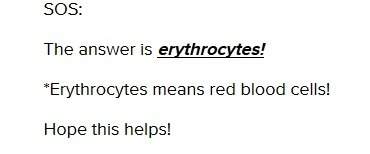
Biology, 10.12.2020 14:00 shaelyn0920
2. Meiosis occurs in the organs of which body system?
F muscle G nervous H circulatory J reproductive
3. What percentage of chromosomes normally found in the body cells of an organism do gamete cells contain after meiosis?
A 25% B 50% C 60% D 100%
4. If a horse has 64 chromosomes in each of its body cells, how many chromosomes will be in each gamete cell after meiosis?
F 32 G 64 H 96 J 128
5. What process shown to the right increases the variations of chromosomes?
A cellular respiration C cytokinesis B gene splicing D crossing-over
6. Which of these is a primary benefit of meiosis and sexual reproduction to a population?
F an increase in the chromosome number H new combinations of genes G new forms of proteins J new alleles in the population
7. Meiosis is significant within a population because it increases the –
F number of mature males H amount of genetically modified organisms G genetic variations in the population J number of new alleles available
8. Offspring that are the result of sexual reproduction are best described by which of the following?
A The offspring are genetically identical to the biological mother and father B The offspring are genetically unique and contain a new combination of genes C The offspring contain fewer chromosomes than either parent because of meiosis D The offspring contain all of the dominant genes found in the grandparents
9. The number of chromosomes found within the cells of any given species is a constant number maintained through multiple generations. The accumulation of chromosomes is prevented because the process of meiosis creates –
F haploid gamete cells H genetically identical daughter cells G mutations that destroy extra DNA J offspring through asexual reproduction
10. When fertilization occurs, the resulting zygote is a diploid cell containing two of every type of chromosome. This is because one of each type of chromosome is –
A mutated by ultraviolet radiation C contributed by both parents B deleted during the fertilization process D duplicated within sperm cells

Answers: 3
Another question on Biology

Biology, 22.06.2019 03:30
Up until 1938, paleontologists accepted the idea that coelacanths (an ancient fish) went extinct at the time that they last appear in the fossil record, about 80 million years ago. but in 1938, a live coelacanth was discovered off the coast of south africa that was compared to the fossil record and found to be the same species what goal of science does this discovery represent
Answers: 1

Biology, 22.06.2019 21:00
A. describe the scientific method, using pasteur's swan-necked flask experiment as an example.
Answers: 1

Biology, 22.06.2019 22:10
Which of the following correctly describes the appearance of muscle tissue found in the heart? (2 points) single-nucleus, non-striated, short cells single-nucleus, striated, branching cells multinucleated, non-striated, branching cells multinucleated, striated, long threadlike cells
Answers: 1

Biology, 22.06.2019 23:00
Which nutrients contain nitrogen in addition to carbon hydrogen, and oxygen? a) vitamins. b) proteins. c) carbohydrates. d) fat
Answers: 2
You know the right answer?
2. Meiosis occurs in the organs of which body system?
F muscle G nervous H circulatory J reproducti...
Questions

History, 09.12.2020 23:20

Mathematics, 09.12.2020 23:20


Geography, 09.12.2020 23:20

History, 09.12.2020 23:20



Mathematics, 09.12.2020 23:20

English, 09.12.2020 23:20


Chemistry, 09.12.2020 23:20


Biology, 09.12.2020 23:20

Mathematics, 09.12.2020 23:20

Mathematics, 09.12.2020 23:20


Mathematics, 09.12.2020 23:20

Mathematics, 09.12.2020 23:20






